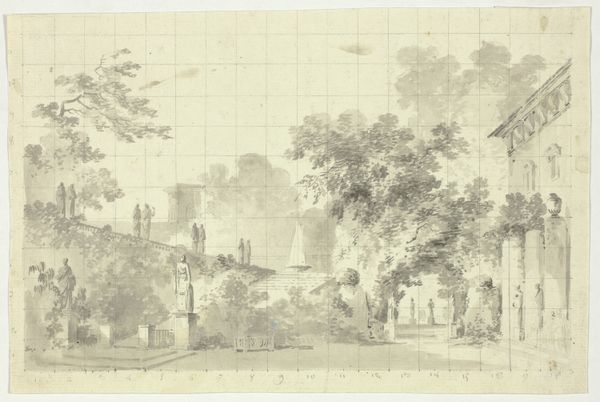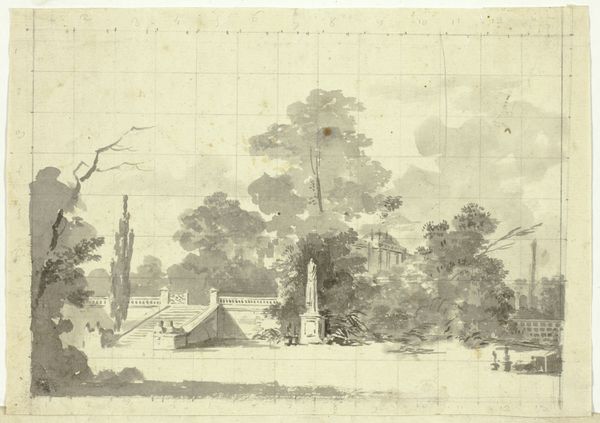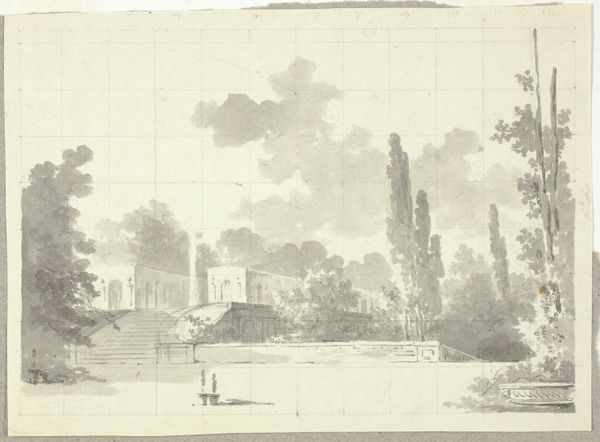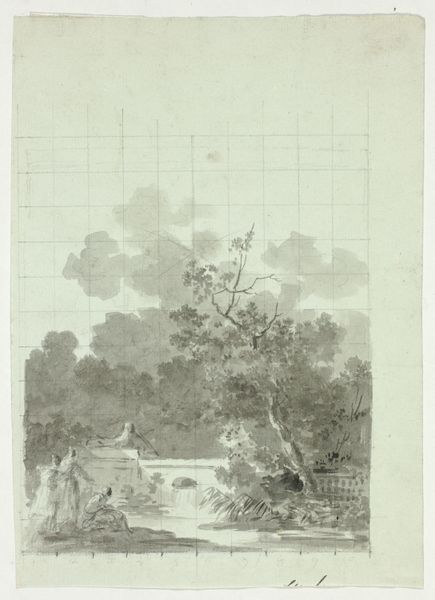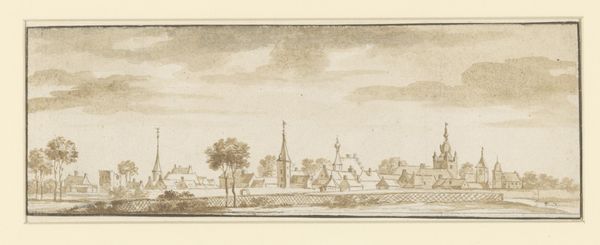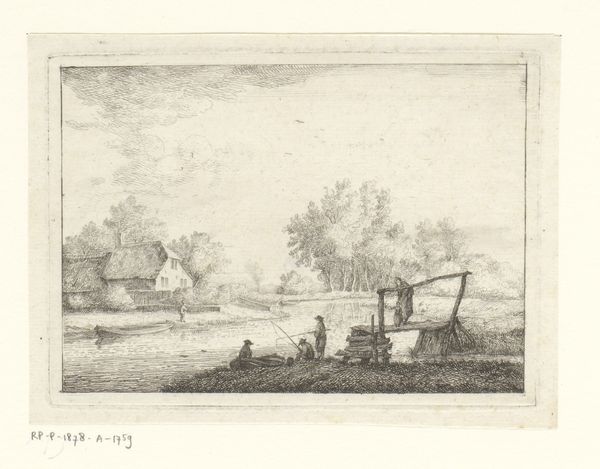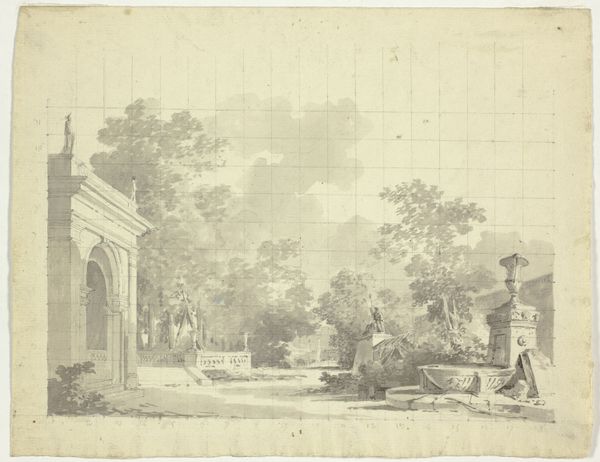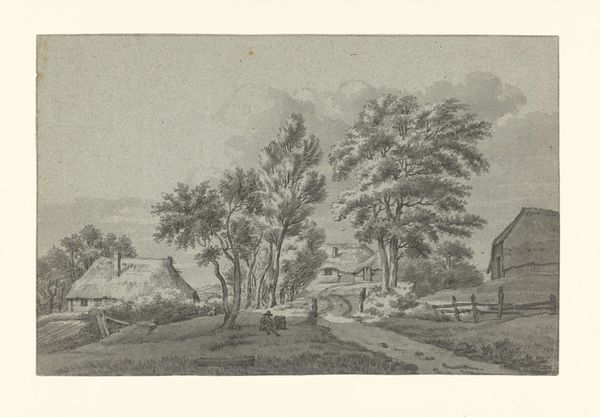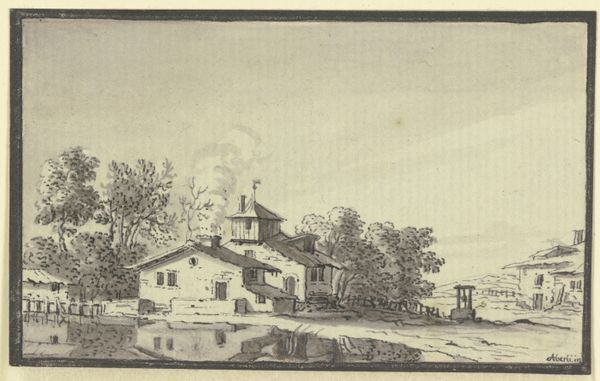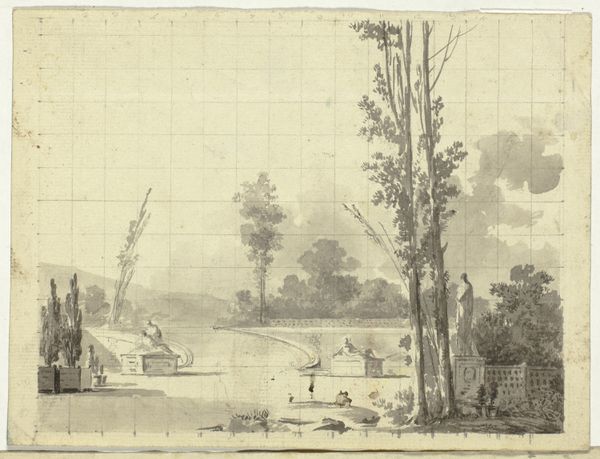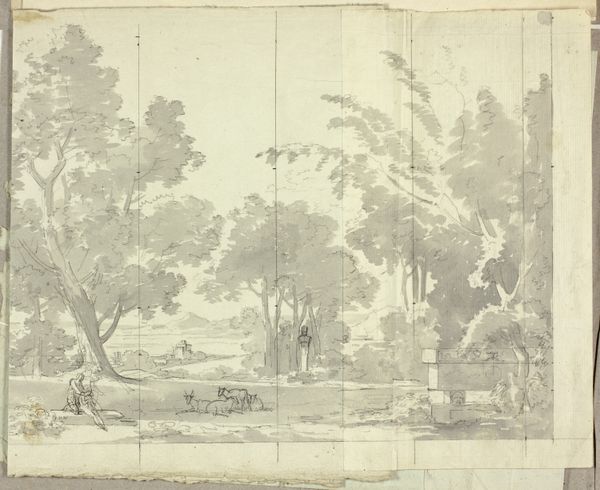
View of the Park at Versailles: Two Sphinxes and a Couple Near a Collonade n.d.
0:00
0:00
drawing, print, paper, ink, chalk, graphite
#
drawing
# print
#
pencil sketch
#
landscape
#
classical-realism
#
etching
#
paper
#
personal sketchbook
#
ink
#
romanticism
#
chalk
#
graphite
#
cityscape
Dimensions: 169 × 233 mm
Copyright: Public Domain
Editor: So, here we have an undated drawing titled "View of the Park at Versailles: Two Sphinxes and a Couple Near a Colonnade," probably rendered in graphite, ink, chalk and pencil on paper, attributed to Antoine Pierre Mongin. The ghostly, almost stage-like arrangement, and the prominent grid, give the drawing a kind of removed feeling. What do you see in this piece, beyond the surface depiction of Versailles? Curator: The drawing presents a seemingly serene view, but through a contemporary lens, we must unpack the ideologies embedded within these constructed landscapes. Versailles, as a symbol of absolute power, meticulously controlled nature and dictated social norms. Notice how the sphinxes, creatures of myth and subjugation, stand guard. Editor: They seem… passive, somehow. Part of the furniture. Curator: Exactly. And consider the "couple near a colonnade." Who are they? Likely members of the aristocracy, beneficiaries of a system built on inequality and the exploitation of labor. The colonnade itself signifies structure, order, and the rigid social hierarchy that defined the era. The grid, of course, speaks to the inherent structure in power, and is maybe Mongin pointing this out in plain view. What purpose do you think this planning may suggest to us? Editor: It's as if it all had to be...engineered into place. Power and nature both, equally controlled. Curator: Precisely. And understanding the landscape not just as aesthetic pleasure but as a manifestation of social and political control opens up a discussion about how landscapes continue to reflect power dynamics today. Are we really that far from those who exploit landscapes today? Editor: I hadn't considered how intentional and, well, constructed it all was, not just the park but the power that it represents. It makes you wonder about the unseen labor, the people excluded from this "view." Curator: That’s precisely the question we should always be asking. Thanks to this, I have renewed perspective on this work, because art demands intersectional understanding of identity, gender, race, and politics, to deepen meaning, even for its original intentions.
Comments
No comments
Be the first to comment and join the conversation on the ultimate creative platform.
